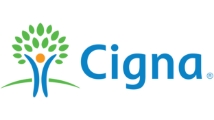
Natural teeth are designed to remain firmly in place for the rest of your life. Unfortunately, accidents can happen, decay can form, and infections can put your oral and overall health at risk. When faced with a tooth that is in bad shape, you may wonder if a root canal is the right option, or if your dentist should move forward with tooth extraction. Before deciding, read on to learn the pros and cons of these services and why opting for a root canal is likely to be the better option.
Root Canals 101: What Constitutes One?
A root canal is an extensive procedure that involves clearing out the diseased or damaged areas of the inner chamber and nearby canals as well as removing the affected pulp. This process allows you to keep your natural tooth so that it can work normally with the help of a custom-made dental crown that is secured on top.
Your dentist might recommend a root canal if you have significant dental decay or facial trauma that is impacting the innermost layer of your tooth – the pulp. This area consists of various nerves and blood vessels that, when affected, can send signals to the brain indicating severe pain.
Tooth Extractions 101: Why Are They Necessary?
Removing a tooth is usually not something your dentist will suggest unless it’s essential for your overall health and well-being. Depending on the status of the tooth (whether it has erupted or is impacted), you will undergo a surgical or simple procedure.
Tooth extractions are often recommended if:
- You have a tooth that is badly decayed and is putting the rest of your smile at risk.
- You have sustained severe facial trauma resulting in the tooth being unsavable.
- You require custom prosthetics to address tooth loss, and your remaining tooth or teeth are at a high risk of falling out.
- You have advanced gum disease that is causing your tooth or teeth to become loose.
Which One is Best? Root Canal or Tooth Extraction?
There are many pros and cons to root canals and tooth extractions, some of which include:
Pros
- Root canals save your natural teeth so that you can avoid costlier treatment in the future.
- Root canals have a high success rate.
- Root canals eliminate the infection and cause of the pain.
- Tooth extractions remove problem teeth that pose a risk to your oral and overall health.
- Tooth extractions and root canals are partially covered by dental insurance.
Cons
- Root canals can be more expensive than having a tooth removed.
- Root canals require additional restorative services, such as dental crown placement.
- Tooth extractions require replacement services, like dental bridges, implants, or partial dentures.
- Tooth extractions can lead to an infection or dry socket.
Choosing which option is right for you is a decision that you and your dentist should make together. While it might seem as if removing the tooth will take care of the problem faster, the reality is that maintaining your natural teeth as long as possible is usually the better option. Although tooth replacement solutions nowadays are better than those crafted decades ago, they still cannot deliver the same level of function as natural teeth.
About the Practice
Indy Dental Group’s team of professional dental experts is pleased to provide safe and effective treatment options for patients with damaged or decayed teeth. Whether it is a root canal or tooth extraction a person needs, we possess the training, experience, and technology to safely and comfortably treat these issues so that better oral health is achieved. If you are dealing with a painful or infected tooth, contact us at (317) 846-6125 to find out which service is right for you.


























